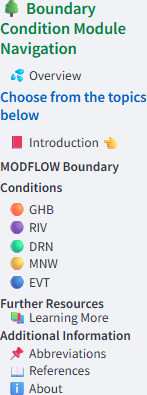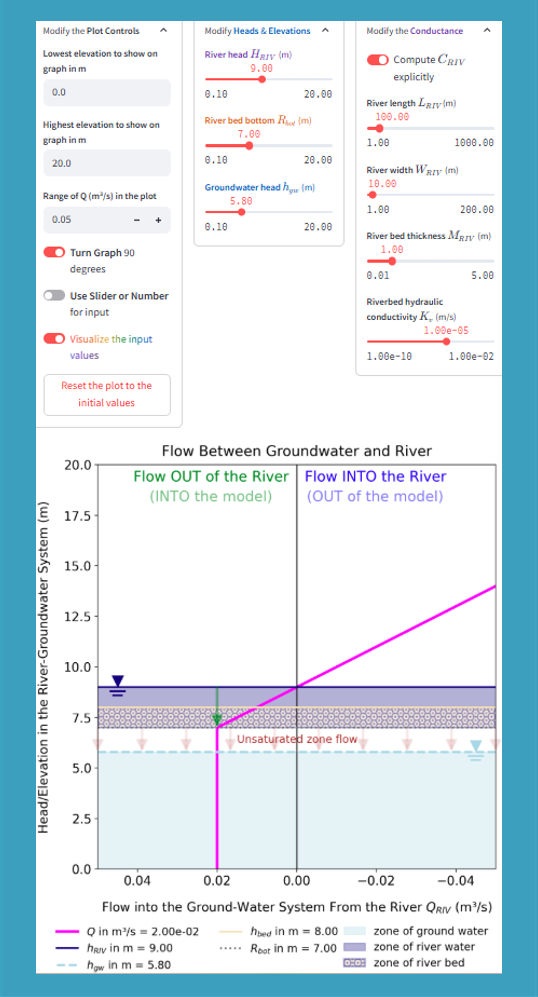Important Note: This interactive tool is designed for educational use.
Understanding how different boundary conditions influence groundwater flow is fundamental to building reliable groundwater models. Boundary conditions control how water enters, leaves, or interacts with the groundwater system, whether through specified heads, specified flows, or head-dependent exchanges such as rivers or drains. However, the behavior of these boundaries can be misinterpreted or misunderstood.
The Boundary Condition Module includes interactive tools to facilitate conceptual understanding of how different boundary types influence groundwater flow using intuitive visual and interactive exploration of Q–h plots. Q–h plots are graphical representations of the relationship between discharge (Q) and hydraulic head (h), to illustrate the behavior of defined head, no-flow, and head-dependent flux boundaries such as surface water bodies and drains. Q-h plots are powerful conceptual tools for classifying and comparing the general response of boundary conditions in groundwater models.
A one-dimensional unconfined aquifer serves as an example to demonstrate how the boundary conditions control flow directions and magnitudes. Self-assessments are included for pre-assessing and post-assessing your understanding.
A module is a self-guided set of Lesson Units with step-by-step instructions allowing the user to work through the material at their own pace and compare their work to prepared solutions for some of the problems. The introduction provides basic concepts in a field setting. Subsequent lessons address the basic types of boundary conditions for large water bodies, rivers, drains, pumping wells with head loss, and evapotranspiration with terminology like that used in MODFLOW.


